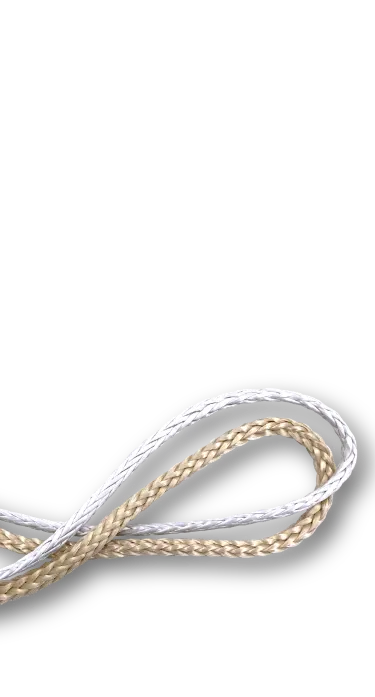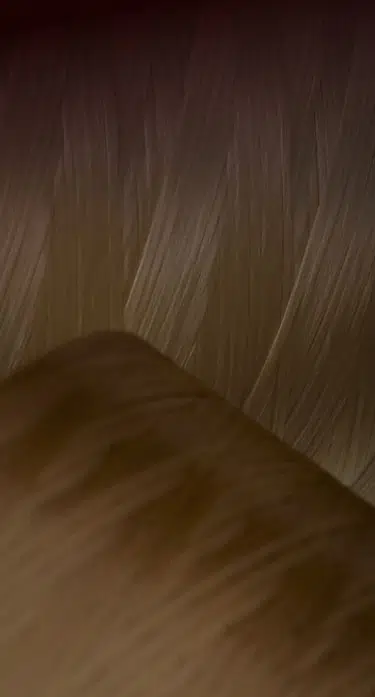Technical fibers
Polyester (PET) and Polyamide (PA) are the most commonly fibers used for the production of the cores of the ropes.
Other technical fibers are derived from the “aromatisation” of the basic fibers: Vectran® (LCP) derived from Polyester, Kevlar®, Twaron® and Technora® derived from Polyamide.
COMPARATIVE TABLE OF THE PROPERTIES OF THE FIBERS USED BY ARMARE
Two further fibres used for high performance applications are
HMPE and PBO, and their trade names are Dyneema®, Spectra® e Zylon®.
The Dyneema® fiber is available in different types, offering a wide range of
performances when coupled to different covers.
Kevlar ®

PBO Zylon ®

Dyneema ®

LEARNING MORE ABOUT THE DIFFERENT FIBERS

The real performance is the core
Construction methods and core composition imply different physical characteristics and determine a different behavior of the ropes under working load.
The outside of many ropes looks exactly the same.
Of course, most of the running riggings are protected by a cover to improve the resistance to
abrasion and to increase the grip on the winch though the load is carried by the core. Fibers used for
the core of the rope can be pre-stretched and PU coated. Above all, the core can be constructed
with different fibers to take the load.
MATERIAL TECHNOLOGY COMPARISON
•Poor
• •Enough
• • • Good
• • • • Very Good
• • • • • Excellent

Stretch
The word “stretch” indicates the phenomenon whereby the fibers of a rope, when subjected to tension, return to their original length when the tension is released.
The stretch is a “reversible lengthening” or “elastic”.
The elongation is related to the specific “modulus” of the fiber and indicates how much resistance the fiber is able to oppose to elongation: the higher the value of the modulus, the lower the elongation.
Creep
Creep is a characteristic of the fiber with which the rope has been made. The fiber creeps when subjected to a constant load for a given time.
The process is irreversible and is called “plastic elongation”.
This deformation depends on the applied load, the time which the load is maintained and the temperature. The higher the temperature to which the line is subjected, the greater the elongation of the rope.
Low Stretch ropes
When a halyard or a sheet elongates, the sail loses its correct air foil shape, so the boat cannot accelerate and fully exploit its power.
The more elastic the rope, the more energy it absorbs. This energy is taken away from the sail.
The loss of energy affects acceleration, especially in gusty conditions, with the result of a continuous need for adjustment of the sails and with appreciable reductions of performance.








